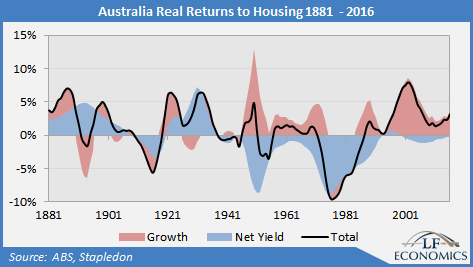For a pretty boring sounding phrase the “build-to-rent” model for housing is getting huge attention across Australia’s property investment community.
Super funds are talking about it, the big developers – Lendlease, Mirvac, Grocon, Stockland – are all talking about it publicly and spending money working it out. Lawyers are positioning themselves, the NSW Treasurer Dominic Perrottet just established a working group to assess the viability of it and even the media is starting on it.
It is an easy enough concept to understand. Build-to-rent is the opposite to build-to-sell. A developer like Mirvac builds apartments to sell them, not to hold them back and rent them out.
However, if you get a developer who gets backing from an institution such as a superannuation fund then you can build on a big scale with a long-term view. And that means you can rent the properties out at a more affordable rate and not only help solve the so-called affordability crisis in Australia but also provide a long-term income stream to thousands of people who have superannuation.
It is happening all around the world – except in little old Australia.
Via the AFR today:
It’s a no-brainer then! Except, will corporatising the rental market actually result in lower rents? Why would a listed corporation charge any less than a regular landlord, especially so when its pricing power will obviously be higher? Are they likely to be more or less accountable for maintenance and costs?
Since the GFC, the US has gone this way and here’s some of the results from Huff Post:
There’s no escaping the stench of raw sewage in Mindy Culpepper’s Atlanta-area rental home. The odor greets her before she turns into her driveway each evening as she returns from work. It’s there when she prepares dinner, and only diminishes when she and her husband hunker down in their bedroom, where they now eat their meals.
For the $1,225 a month she pays for the three-bedroom house in the quiet suburb of Lilburn, Culpepper thinks it isn’t too much to expect that her landlord, Colony American Homes, make the necessary plumbing repairs to eliminate the smell. But her complaints have gone unanswered, she said. Short of buying a plane ticket to visit the company’s office in Scottsdale, Ariz., she is out of ideas.
“You can not get in touch with them, you can’t get them on the phone, you can’t get them to respond to an email,” said Culpepper, whose family has lived with the problem since the day they moved in five months ago. “My certified letters, they don’t get answered.”
Most rental houses in the U.S. are owned by individuals, or small, local businesses. Culpepper’s landlord is part of a new breed: a Wall Street-backed investment company with billions of dollars at its disposal. Over the past two years, Colony American and its two biggest competitors, Invitation Homes and American Homes 4 Rent, have spent more than $12 billion buying and renovating at least 75,000 homes in order to rent them out.
This new incursion by hedge funds and private equity groups into the American single-family home rental market is unprecedented, and is proving disastrous for many of the tens of thousands of families who are moving into these newly converted rental homes. In recent weeks, HuffPost spoke with more than a dozen current tenants, along with former employees who recently left the real estate companies. Though it’s not uncommon for tenants to complain about their landlords, many who had rented before described their current experience as the worst they’ve ever had.
“I’ve been renting homes for 15 years and I’ve never had a landlord be this ridiculous about getting stuff repaired,” said Henry Cecil, who moved into a four-bedroom house in Winter Haven, Fla., owned by Invitation Homes in March. Invitation Homes is an arm of Blackstone, the largest private equity firm in the world. The firm booked more than $4 billion in revenue in 2012.
Aside from that, let’s face it, we’re already building units and homes with gay abandon. That’s driving land prices insane as it hits our constrained land release system. Is adding a the four hundred pound gorilla of corporate builders and land bankers going to help that? No. It’s going to raise the price of new dwellings, which is the real idea here given Australia has no rental returns:

And are we supposed to believe that adding such a bevy of capital gains dependent corporations to the housing “market” will in any way will reduce its already catastrophic lobbying power?
No, this is another bullshit idea by the rent-seekers for the rent-seekers seeking to suck more lifeblood from the market failure of Australian housing (that is, our youth).
If you want more and lower rentals then change the market structure:
- reform negative gearing;
- reform land use planning;
- reform infrastructure delivery;
- cut immigration.

